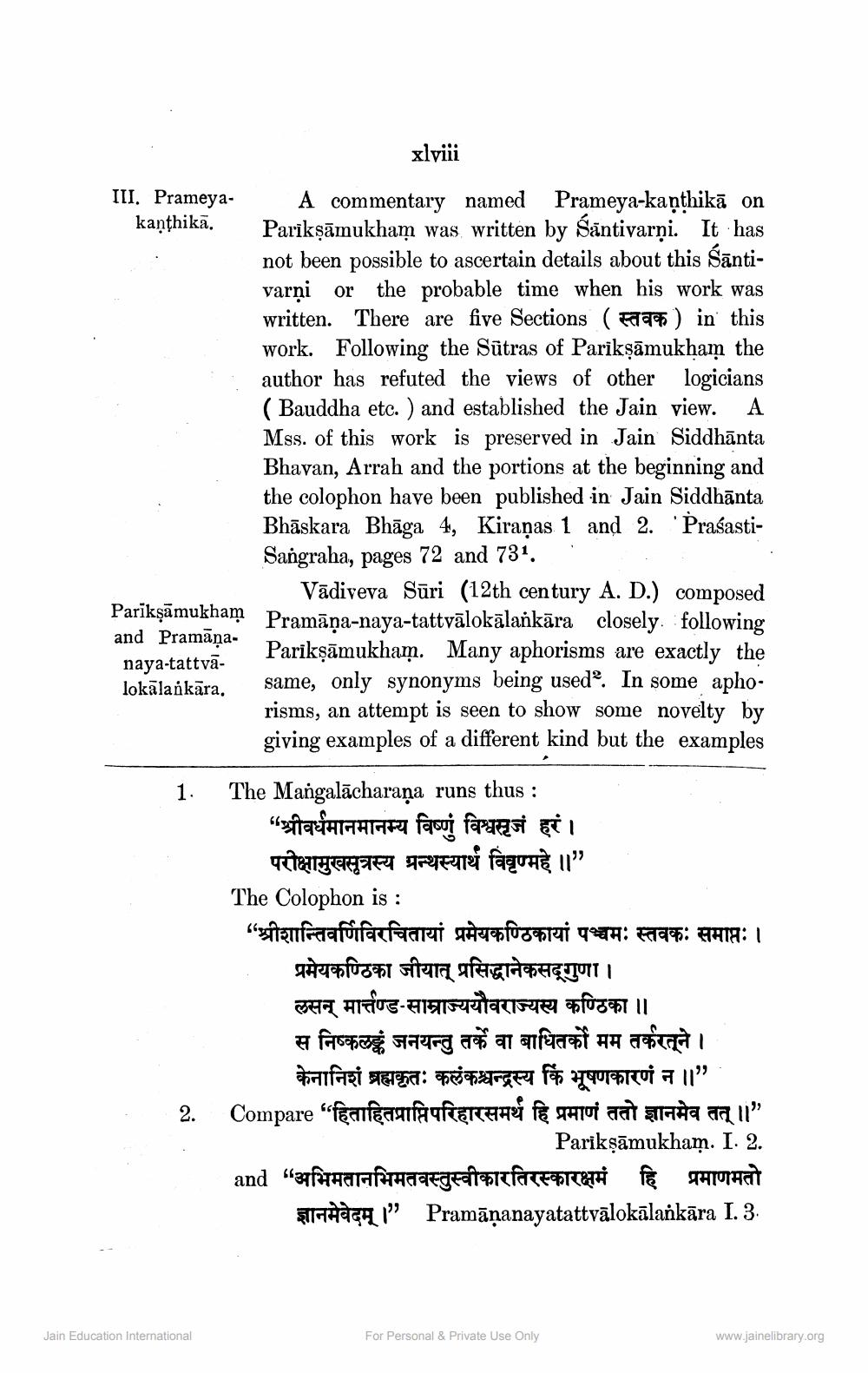________________
xlviii
III. Prameya-
kanthika.
A commentary named Prameya-kaņthikā on Parikşāmukham was written by śāntivarņi. It has not been possible to ascertain details about this sāntivarņi or the probable time when his work was written. There are five Sections (Falas) in this work. Following the Sūtras of Parikṣāmukham the author has refuted the views of other logicians ( Bauddha etc. ) and established the Jain view. A Mss. of this work is preserved in Jain Siddhānta Bhavan, Arrah and the portions at the beginning and the colophon have been published in Jain Siddhānta Bhaskara Bhāga 4, Kiranas 1 and 2. 'PrasastiSangraha, pages 72 and 731. .
Vādiveva Sūri (12th century A. D.) composed Pramāna-naya-tattvālokālankāra closely following Parikşāmukham. Many aphorisms are exactly the same, only synonyms being used”. In some aphorisms, an attempt is seen to show some novelty by giving examples of a different kind but the examples
Parīkņāmukham and Pramana
naya-tattvalokalankara.
___1.
The Mangalacharana runs thus :
"श्रीवर्धमानमानम्य विष्णुं विश्वसृजं हरं।
परीक्षामुखसुत्रस्य ग्रन्थस्यार्थ विवृण्महे ॥" The Colophon is : "श्रीशान्तिवर्णिविरचितायां प्रमेयकण्ठिकायां पञ्चमः स्तवकः समाप्तः ।
प्रमेयकण्ठिका जीयात् प्रसिद्धानेकसद्गुणा। लसन् मार्तण्ड-साम्राज्ययौवराज्यस्य कण्ठिका ॥ स निष्कलङ्क जनयन्तु तर्के वा बाधितर्को मम तर्करत्ने ।
केनानिशं ब्रह्मकृतः कलंकश्चन्द्रस्य किं भूषणकारणं न ॥" Compare “हिताहितप्राप्तिपरिहारसमर्थ हि प्रमाणं ततो ज्ञानमेव तत् ॥"
Pariksāmukham. I. 2. and "अभिमतानभिमतवस्तुस्वीकारतिरस्कारक्षम हि प्रमाणमतो
ज्ञानमेवेदम् ।” Pramānanayatattvalokilaikāra I. 3.
2.
Jain Education International
For Personal & Private Use Only
www.jainelibrary.org




